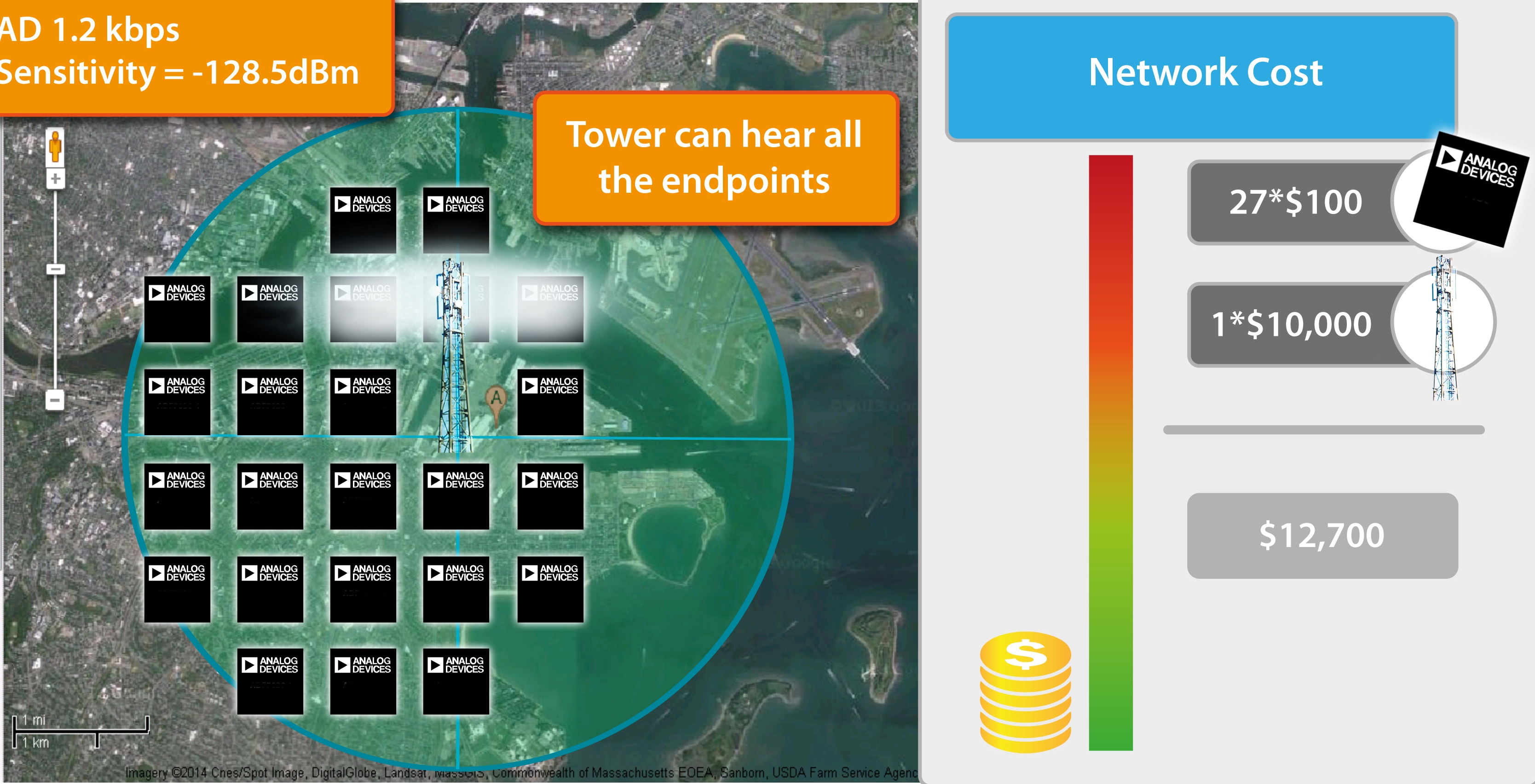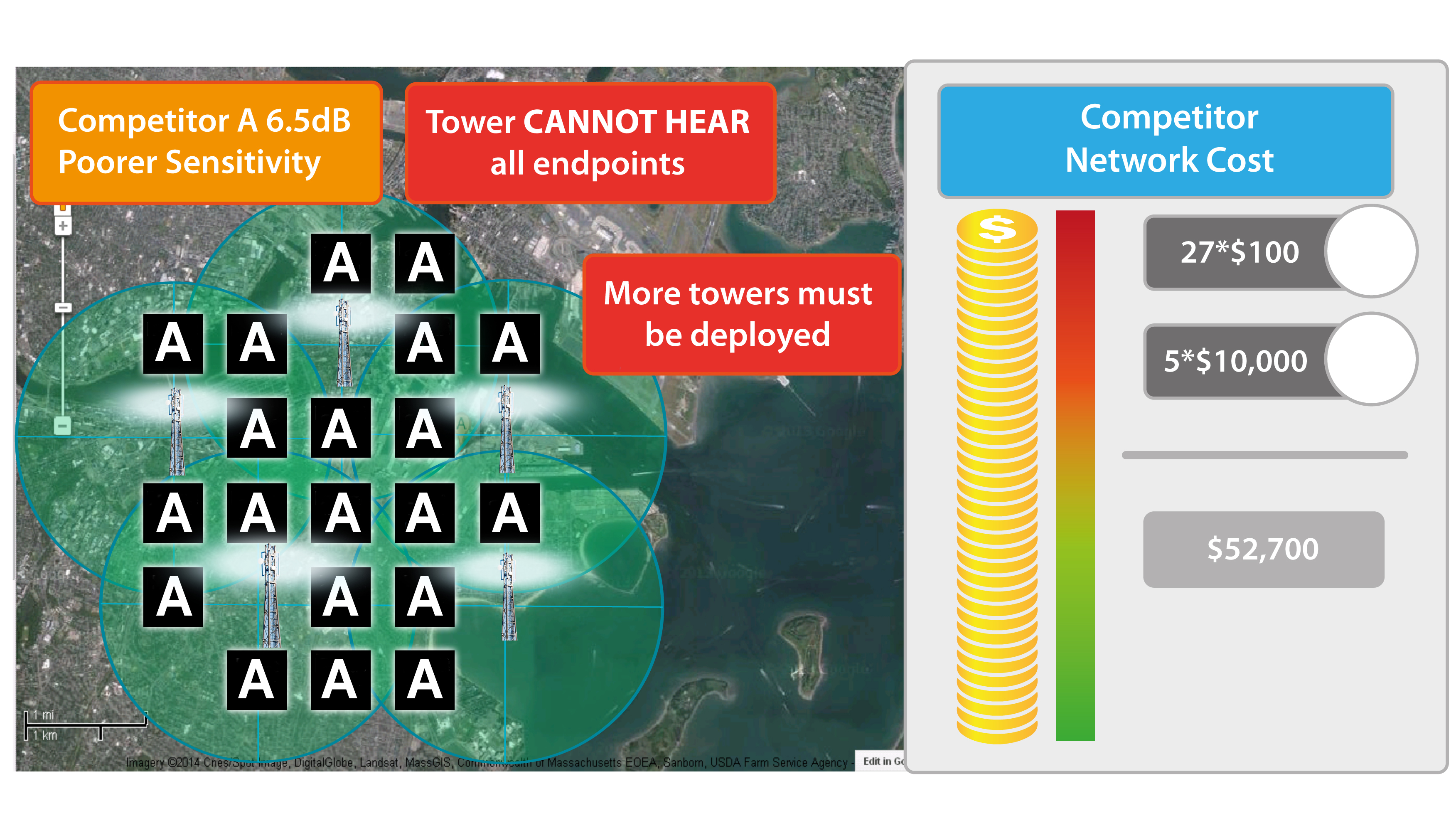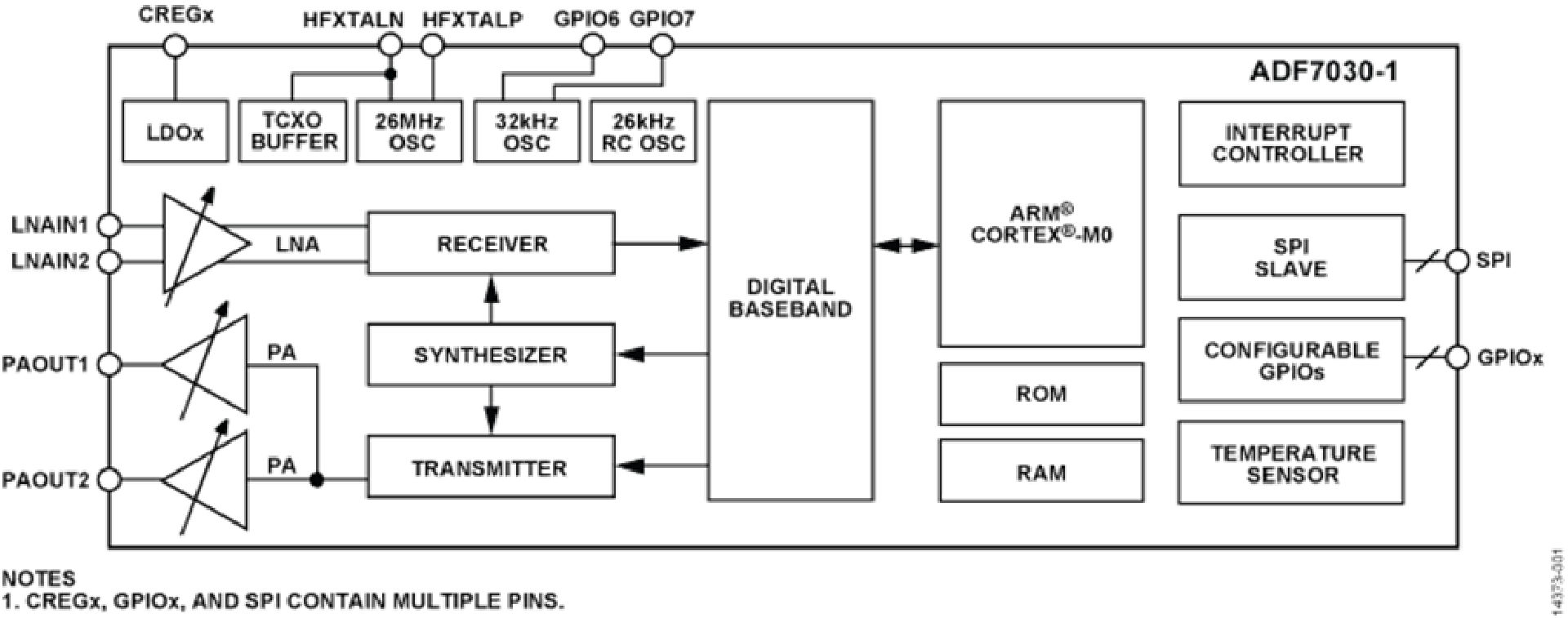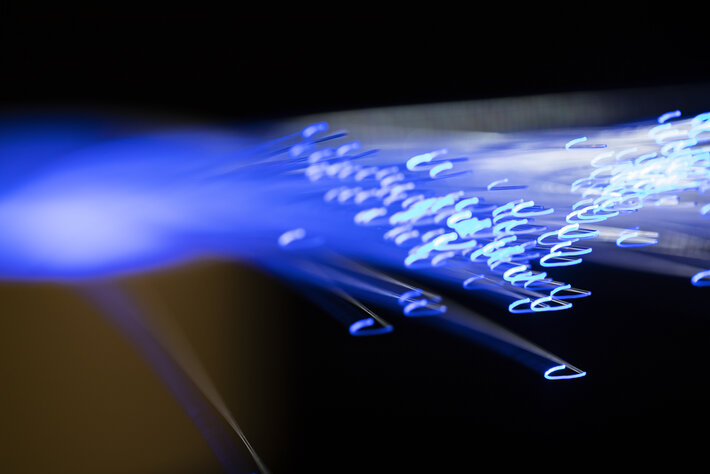The Internet of Things is evolving to provide greater intelligence at the node, converting raw data into smart information.
With less data to communicate, it becomes more cost-effective to integrate new ultra-low-power RF transceivers into the node module. Certification to wireless protocol standards ensures interoperability and the emergence of open tools will make support for these standards less onerous to developers.
The Internet of Things can be described as a chain starting with sensing, through measurement and interpretation, to analysis and prediction. In typical IoT applications, raw data are transmitted via RF communication to the Cloud, where measurement, interpretation, analysis are performed, says Paul Dawson, divisional marketing manager, Analog Devices Anglia Components.
 This results in simpler nodes, but this advantage comes at the cost of power-hungry data communications and increasingly clogged networks. These disadvantages are removed by executing sensor analytics in the node rather than the cloud – converting data into smart information before sending it to the cloud for analysis. The challenge is to do so without disrupting the power budget or escalating the cost.
This results in simpler nodes, but this advantage comes at the cost of power-hungry data communications and increasingly clogged networks. These disadvantages are removed by executing sensor analytics in the node rather than the cloud – converting data into smart information before sending it to the cloud for analysis. The challenge is to do so without disrupting the power budget or escalating the cost.
In part 1 of this article we will look at how new ultralow-power RF transceiver technologies are bringing class-leading range performance and high resilience to interference sources. Sub-GHz Ultra Low Power RF Transceivers deliver more end-points per gateway with fewer black spots. Shutdown current of 5nA and highly flexible sleep mode configuration reduce the power requirements, leading to more compact, longer-lasting, batteries.
Real-world savings
With fewer collectors required to cover a given area there is a significant saving in overall network costs.
To illustrate, we have estimated the cost for a network with two different scenarios. The first envisages a network (figure 1) comprising 27 nodes, each equipped with a transceiver chip having market-leading -128.5dBm sensitivity at 1.2kbps, can send data via single tower. The second is based on typical transceivers in use which currently achieve 6.5dB lower sensitivity, leading to five towers being needed instead of one.
 Total cost, estimated on the basis of $100 per node and $10, 000 per tower, comes to $12,700 for the first scenario, $52,700 for the second. Savings are around 75%.
Total cost, estimated on the basis of $100 per node and $10, 000 per tower, comes to $12,700 for the first scenario, $52,700 for the second. Savings are around 75%.
Higher performance transceivers enable further cost savings by eliminating the need for external components. Alternative designs employ a high-side switch between the transceiver and battery, but the new transceiver’s low shutdown current with retention eliminates the need to cut off the radio leakage path. Another example is the need for external low-noise amplifiers to compensate for the poor noise figure of the transceiver. With noise figure down to 5.25dB, the LNA is redundant. Last but not least, transceiver modules having blocking performance better than 100dB no longer necessitate using external SAW filters to block out-of-band interference.
Ultralow-power embedded processors
Working alongside the transceiver device itself, a microcontroller provides the intelligent heart of the node, performing sensor analytics as well as running software stacks, drivers and interfaces. As with the transceiver, power consumption is critical for IoT applications. Datasheet specifications can be confusing, which is why the Embedded Microprocessor Benchmark Consortium (EEMBC®) has established a measure that “standardises on datasheet parameters and provides a methodology to reliably and equitably measure MCU energy efficiency”.
ULPBench recognises the trade-offs between active current, sleep mode current, and duty cycle, so is a useful yardstick for IoT designs. The ADuCM3029 Ultra Low Power Microcontroller complements its transceiver device with active current of 38uA/MHz and 750nA hibernate current leading to a ULPBench score of 245.5.
 Further considerations include resilience to voltage drops and memory glitches, which can prematurely end product life following an unrecoverable crash. Features like ECC error correction on Flash memory, parity error detection on SRAM and full voltage monitoring in sleep mode all contribute to a robust and resilient MCU.
Further considerations include resilience to voltage drops and memory glitches, which can prematurely end product life following an unrecoverable crash. Features like ECC error correction on Flash memory, parity error detection on SRAM and full voltage monitoring in sleep mode all contribute to a robust and resilient MCU.
Security is a further critical consideration in the evolution of greater intelligence at IoT nodes. Encryption of radio links using AES, together with over-the-air software deployment using SHA image verification, reduce the risk of ending product life due to system hack, whilst protecting the intellectual property of developers.
In part 2 of this article we will consider how the processor and the transceiver can be combined in a single module.
The author of this blog is Paul Dawson, divisional marketing manager, Analog Devices Anglia Components
About the Author:
Paul Dawson is divisional marketing manager at Anglia for Analog Devices and has been with the company for over four years. He has nearly twenty years’ experience of electronic design, including as chief engineer at AD Aerospace and as a senior applications engineer at Fujitsu Microelectronics Network Products Division. He has an honours degree in Electrical and Electronic Engineering.
Comment on this article below or via Twitter: @IoTNow_ OR @jcIoTnow










